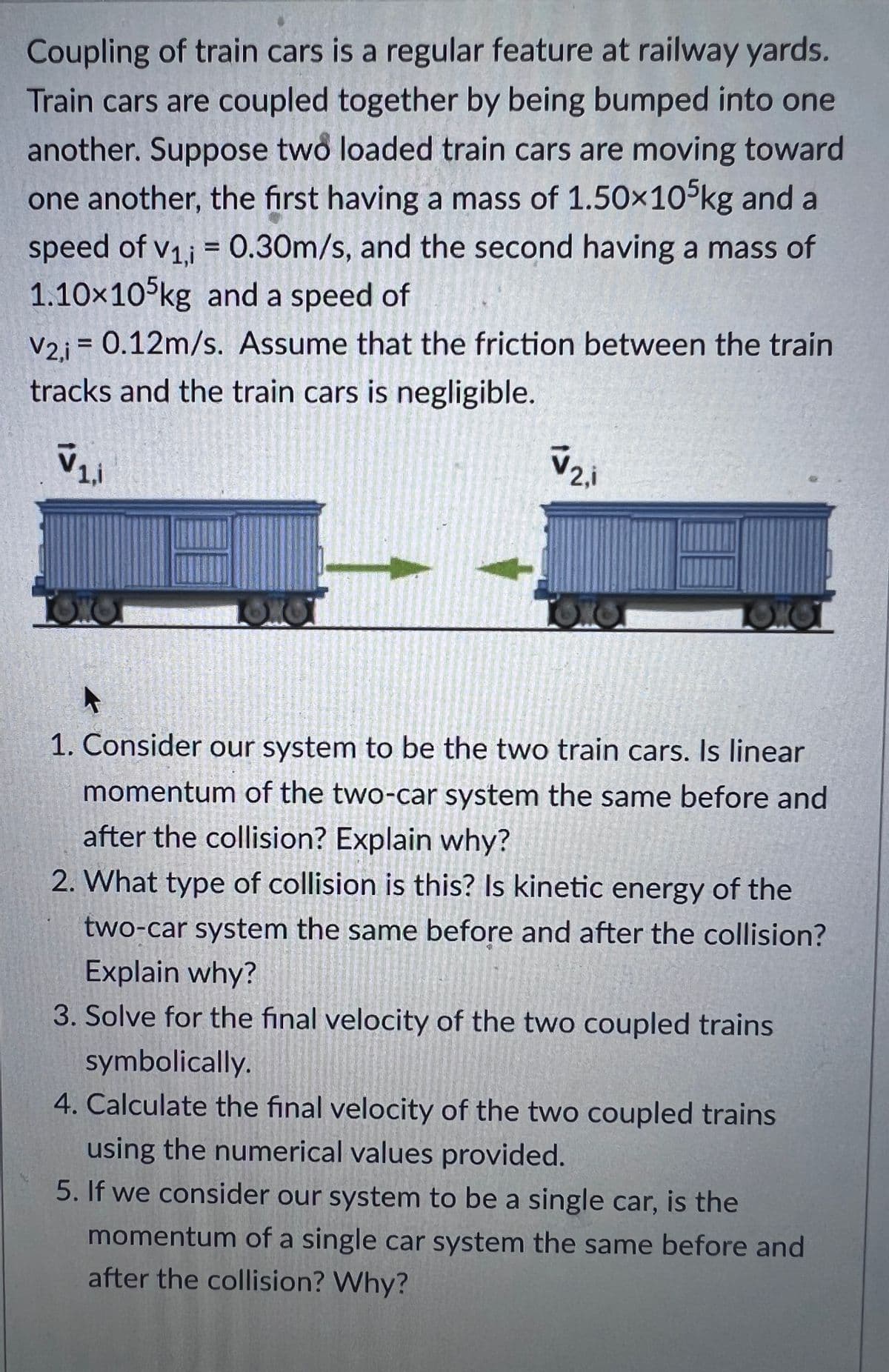Coupling of train cars is a regular feature at railway yards. Train cars are coupled together by being bumped into one another. Suppose two loaded train cars are moving toward one another, the first having a mass of 1.50×105kg and a speed of v₁,i = 0.30m/s, and the second having a mass of
Coupling of train cars is a regular feature at railway yards. Train cars are coupled together by being bumped into one another. Suppose two loaded train cars are moving toward one another, the first having a mass of 1.50×105kg and a speed of v₁,i = 0.30m/s, and the second having a mass of
Classical Dynamics of Particles and Systems
5th Edition
ISBN:9780534408961
Author:Stephen T. Thornton, Jerry B. Marion
Publisher:Stephen T. Thornton, Jerry B. Marion
Chapter9: Dynamics Of A System Of Particles
Section: Chapter Questions
Problem 9.36P: In an elastic collision of two particles with masses m1 and m2, the initial velocities are u1 and u2...
Related questions
Question
Show all work please, I am so confused. Thank you!

Transcribed Image Text:Coupling of train cars is a regular feature at railway yards.
Train cars are coupled together by being bumped into one
another. Suppose two loaded train cars are moving toward
one another, the first having a mass of 1.50×105kg and a
speed of V₁,i = 0.30m/s, and the second having a mass of
1.10×105kg and a speed of
V2,i = 0.12m/s. Assume that the friction between the train
tracks and the train cars is negligible.
V₁,1
OX
V2.i
LOX
OK
A
1. Consider our system to be the two train cars. Is linear
momentum of the two-car system the same before and
after the collision? Explain why?
2. What type of collision is this? Is kinetic energy of the
two-car system the same before and after the collision?
Explain why?
3. Solve for the final velocity of the two coupled trains
symbolically.
4. Calculate the final velocity of the two coupled trains
using the numerical values provided.
If we consider our system to be a single car, is the
momentum of a single car system the same before and
after the collision? Why?
Expert Solution
This question has been solved!
Explore an expertly crafted, step-by-step solution for a thorough understanding of key concepts.
This is a popular solution!
Trending now
This is a popular solution!
Step by step
Solved in 2 steps

Knowledge Booster
Learn more about
Need a deep-dive on the concept behind this application? Look no further. Learn more about this topic, physics and related others by exploring similar questions and additional content below.Recommended textbooks for you

Classical Dynamics of Particles and Systems
Physics
ISBN:
9780534408961
Author:
Stephen T. Thornton, Jerry B. Marion
Publisher:
Cengage Learning

Modern Physics
Physics
ISBN:
9781111794378
Author:
Raymond A. Serway, Clement J. Moses, Curt A. Moyer
Publisher:
Cengage Learning

Classical Dynamics of Particles and Systems
Physics
ISBN:
9780534408961
Author:
Stephen T. Thornton, Jerry B. Marion
Publisher:
Cengage Learning

Modern Physics
Physics
ISBN:
9781111794378
Author:
Raymond A. Serway, Clement J. Moses, Curt A. Moyer
Publisher:
Cengage Learning